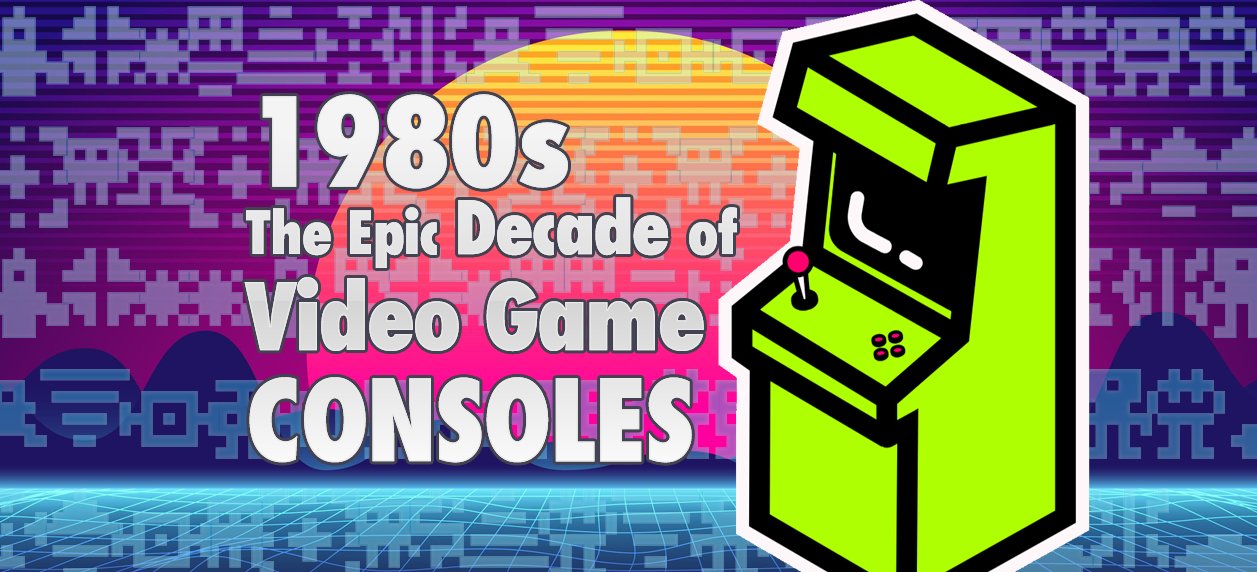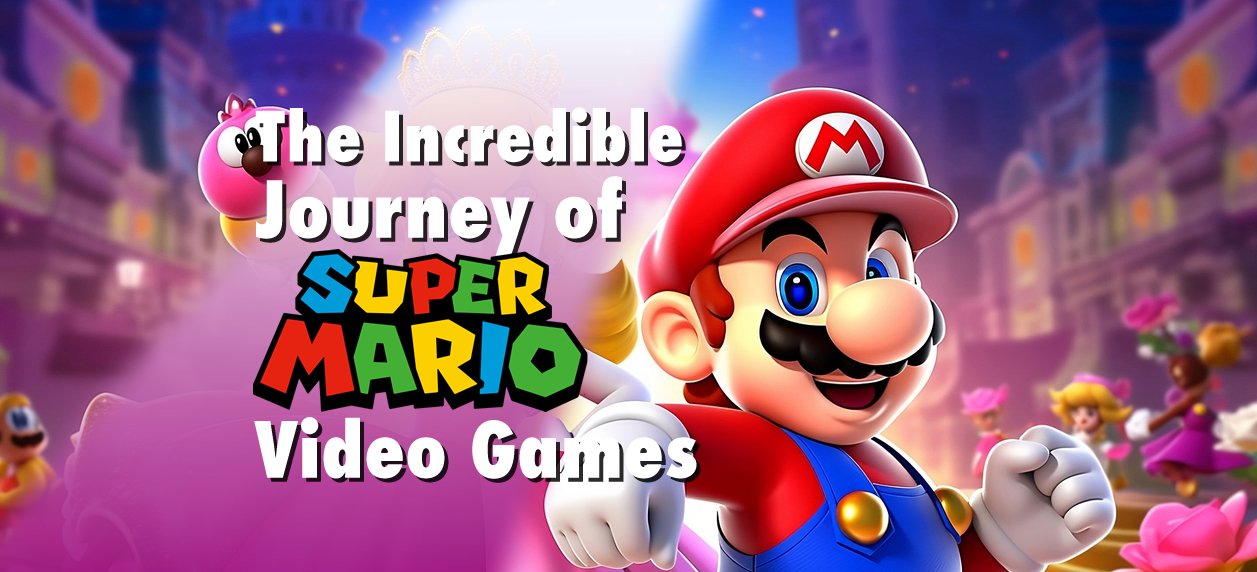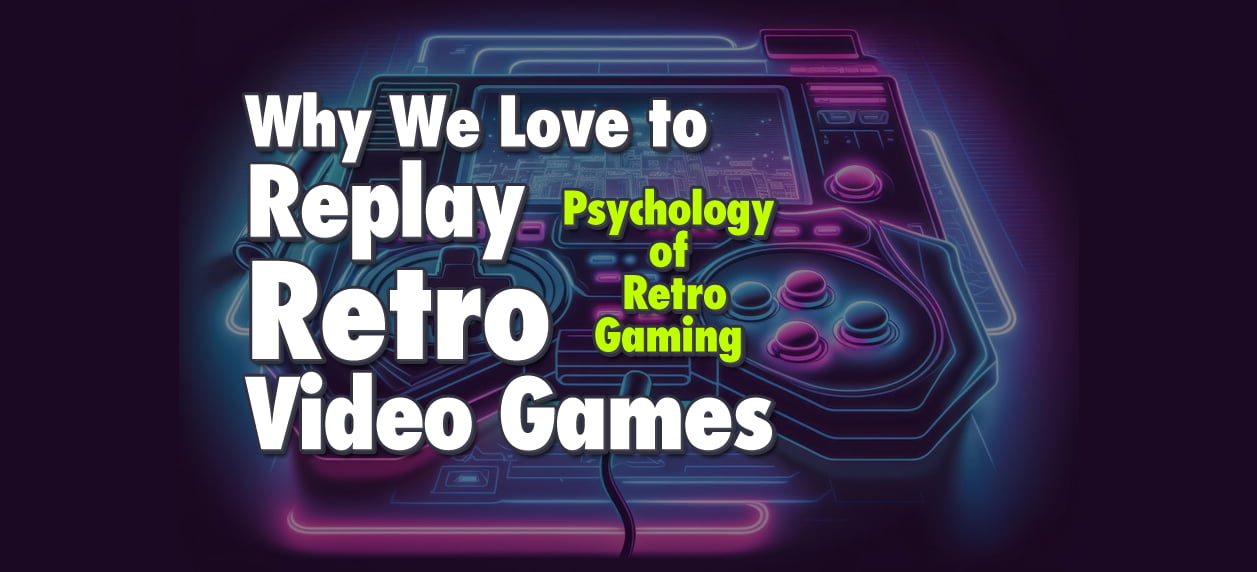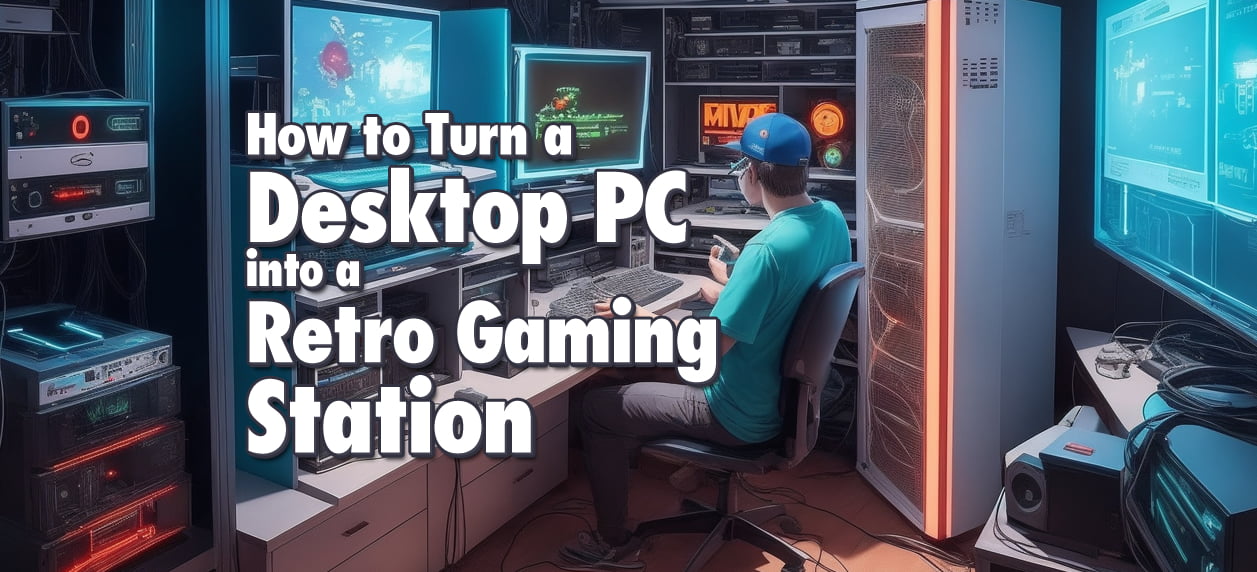The 1980s marked the dawn of a new era in gaming, where pixelated adventures and iconic characters laid the foundation for the vibrant gaming landscape we know today. Join us as we embark on a nostalgic journey through time, exploring the top 10 video game consoles that captured the hearts of gamers during this transformative decade.
Table of Contents
From simple yet addictive gameplay to groundbreaking technological advancements, each console carved its own path in the annals of gaming history.
🕹️ Explore our store for Home & Handheld Retro Gaming Console Deals.
Atari 2600 – The Pioneer of Home Gaming

The 1980s gaming landscape owes much of its foundation to the Atari 2600. This iconic console introduced the concept of gaming in the comfort of your living room, effectively pioneering home gaming. With its classic joystick and simple yet addictive games like “Pac-Man” and “Space Invaders,” the Atari 2600 became a staple in households worldwide, forever shaping the future of gaming.
👍 PROS
- Pioneering Console: The Atari 2600 was a trailblazer, bringing video gaming to living rooms worldwide and shaping the concept of home gaming.
- Wide Game Library: With a diverse range of games, from classics like “Pac-Man” to “Space Invaders,” the Atari 2600 offered something for everyone.
- Accessible Gameplay: The console's joystick and single-button controller made gameplay easy to pick up, even for newcomers.
👎 CONS
- Limited Graphics: The Atari 2600's hardware limitations resulted in simplistic graphics that couldn't match the visuals of later consoles.
- Game Quality Variability: Due to the console's open development model, game quality varied significantly, leading to a mix of hit and miss titles.
- Lack of Longevity: The market crash in the mid-1980s and competition from newer consoles contributed to the decline of the Atari 2600.
Atari 2600 Popular Games:
- Pac-Man
- Space Invaders
- Pitfall!
- Asteroids
- Frogger
- E.T. the Extra-Terrestrial
- Adventure
- Missile Command
- Centipede
- Breakout
Intellivision – A Step Towards Realistic Gaming

In the early 1980s, the Intellivision console elevated gaming experiences with more advanced graphics and sports titles that aimed to provide a realistic feel. Though it faced stiff competition, the Intellivision earned its place in gaming history, offering a glimpse of the innovation that would define the decade.
👍 PROS
- Advanced Graphics: The Intellivision showcased more sophisticated graphics compared to its contemporaries, adding a new level of visual detail to games.
- Sports Titles: The console gained popularity for its sports games, like “NFL Football” and “Major League Baseball,” which offered realistic gameplay for the time.
- Voice Synthesis: Intellivision's voice synthesis module added a novel audio element to gaming, enhancing the overall experience.
👎 CONS
- Complex Controller: While the Intellivision's controller featured a numeric keypad, it could be challenging to use, especially for younger players.
- Niche Titles: The Intellivision had a narrower selection of games compared to competitors, limiting its appeal to certain gaming preferences.
- Market Competition: The rise of the NES and other consoles eventually overshadowed the Intellivision's popularity.
Intellivision Popular Games:
- Astrosmash
- Utopia
- Advanced Dungeons & Dragons
- NBA Basketball
- Tron: Solar Sailer
- B-17 Bomber
- Night Stalker
- Microsurgeon
- Auto Racing
- Space Battle
ColecoVision – The Arcade in Your Home

ColecoVision carved its niche in the gaming market by delivering faithful arcade ports like “Donkey Kong” and “Ms. Pac-Man.” It brought the arcade experience into living rooms and showcased the potential for home gaming to be more than a novelty.
👍 PROS
- Arcade Ports: The ColecoVision excelled at arcade-style games, providing faithful ports of popular titles like “Donkey Kong” and “Ms. Pac-Man.”
- Quality Controllers: The console's controllers, featuring a numeric keypad and a joystick, were praised for their responsiveness and suitability for various game genres.
- Expansion Modules: ColecoVision's expansion modules, such as the Expansion Module #2 for playing Atari 2600 games, added versatility to the console.
👎 CONS
- Game Library Limitations: While the ColecoVision had impressive arcade ports, its library outside of these titles was relatively limited.
- Lack of Longevity: Similar to other early consoles, the ColecoVision faced challenges due to the video game market crash in the mid-1980s.
- Competition from Atari: The rivalry between ColecoVision and the Atari 2600 led to intense competition, affecting both consoles' market share.
ColecoVision Popular Games:
- Donkey Kong
- Zaxxon
- Smurf: Rescue in Gargamel's Castle
- Frogger
- Pitfall II: Lost Caverns
- Mousetrap
- Venture
- Cosmic Avenger
- Lady Bug
- Buck Rogers: Planet of Zoom
Nintendo Entertainment System (NES) – The Renaissance of Gaming

The arrival of the Nintendo Entertainment System (NES) in the mid-1980s marked a renaissance in gaming. With titles like “Super Mario Bros.” and “The Legend of Zelda,” the NES redefined the gaming landscape. It not only revitalized the industry after the market crash but laid the groundwork for the modern gaming era.
👍 PROS
- Revitalizing Gaming: The NES revitalized the gaming industry after the market crash, introducing iconic franchises like “Super Mario” and “The Legend of Zelda.”
- Robust Game Library: The NES boasted a diverse library with genres ranging from platformers to RPGs, catering to a wide audience.
- Innovative Accessories: Accessories like the Zapper light gun and Power Glove introduced novel ways to interact with games, expanding gameplay possibilities.
👎 CONS
- Unlicensed Games: The NES suffered from a flood of unlicensed and poor-quality games, leading to concerns about game quality control.
- Limited Graphics: While revolutionary at the time, the NES's graphics were limited compared to later consoles, resulting in some visual limitations.
- Non-Standard Controller: The NES controller layout, while iconic, lacked the standardized layout we see in modern controllers.
NES Popular Games:
- Super Mario Bros
- The Legend of Zelda
- Metroid
- Mega Man
- Castlevania
- Duck Hunt
- Contra
- Final Fantasy
- Mike Tyson's Punch-Out!!
- Excitebike
Sega Master System – Sega's Bold Entry

Sega made its entrance into the console market with the Master System, which boasted improved graphics and faithful arcade ports. While it faced fierce competition, the Master System showcased Sega's determination to become a major player in the gaming industry.
👍 PROS
- Graphical Advancements: The Sega Master System offered improved graphics over its predecessors, resulting in more detailed and colorful games.
- Arcade Ports: The console excelled in delivering arcade-quality ports of games like “Out Run” and “Space Harrier.”
- 3D Glasses: The optional 3D glasses accessory added depth to certain games, offering a unique visual experience.
👎 CONS
- Market Competition: The Master System faced stiff competition from the NES, leading to challenges in gaining a significant market share.
- Limited Third-Party Support: The NES's dominance made some third-party developers hesitant to create games for the Master System.
- Lack of Iconic Franchises: While the Master System had strong titles, it lacked the memorable franchises that its competitors introduced.
Sega Master System Popular Games:
- Alex Kidd in Miracle World
- Sonic the Hedgehog (8-bit version)
- Phantasy Star
- Shinobi
- Wonder Boy III: The Dragon's Trap
- R-Type
- Fantasy Zone
- Alex Kidd: The Lost Stars
- Ninja Gaiden (Master System version)
- Space Harrier
Atari 5200 – Advancing the Graphics

The Atari 5200, despite a relatively short lifespan, made strides in graphics and introduced an analog joystick for more precise control. It demonstrated Atari's commitment to pushing the boundaries of gaming technology.
👍 PROS
- Enhanced Graphics: The Atari 5200 improved upon the Atari 2600's graphics, providing more detailed and visually appealing games.
- Analog Joystick: The console's analog joystick provided smoother and more precise controls for a variety of games.
- Compatibility with 2600 Games: The 5200 was backward compatible with Atari 2600 games, expanding the available game library.
👎 CONS
- Controller Durability: The 5200's controller was criticized for its fragility and issues with joystick wear over time.
- Limited Game Library: Despite its capabilities, the 5200's game library was relatively small compared to other consoles.
- Lack of Third-Party Support: The 5200 struggled to attract significant third-party support, impacting the variety of available games.
Atari 5200 Popular Games:
- Ms. Pac-Man
- Super Breakout
- Space Invaders
- Pole Position
- Galaxian
- Pitfall II: Lost Caverns
- Joust
- Q*bert
- Centipede
- Moon Patrol
Commodore 64 – A Home Computer and Gaming Machine

The Commodore 64 was not just a gaming console; it was a home computer with impressive gaming capabilities. With its extensive library and powerful hardware, it offered a unique blend of gaming and computing that appealed to hobbyists and gamers alike.
👍 PROS
- Vast Game Library: The Commodore 64 boasted an extensive library of games across various genres, making it a versatile gaming platform.
- Powerful Hardware: The console's impressive hardware capabilities allowed for more advanced graphics and sound compared to other systems of the time.
- Home Computer Functionality: Beyond gaming, the Commodore 64 served as a home computer with programming capabilities, fostering a community of hobbyists.
👎 CONS
- Steep Learning Curve: The Commodore 64's home computer functionality came with a learning curve, requiring users to understand basic programming concepts.
- Lack of Standardization: Due to the open nature of the platform, game quality and compatibility varied widely.
- Peripheral Costs: While the base system was affordable, additional peripherals and software could contribute to higher overall costs.
Commodore 64 Popular Games:
- The Bard's Tale
- California Games
- Impossible Mission
- Ghostbusters
- Summer Games
- Maniac Mansion
- Boulder Dash
- Jumpman
- Archon: The Light and the Dark
- The Last Ninja
Nintendo Game & Watch Series – Handheld Innovation

Nintendo's Game & Watch series brought gaming into your pocket. These handheld devices featured a variety of games, from classics like “Donkey Kong” to unique titles that showcased Nintendo's innovative spirit.
👍 PROS
- Portability: The Game & Watch series introduced handheld gaming, offering portable entertainment that fit in your pocket.
- Variety of Titles: The series encompassed various games, from arcade classics like “Donkey Kong” to sports and puzzle games.
- Innovative Design: The dual-screen design of certain models added new gameplay dynamics, enhancing the overall experience.
👎 CONS
- Single-Game Units: Each Game & Watch unit was dedicated to a single game, limiting the variety of experiences compared to other consoles.
- Limited Controls: The simplistic controls were suitable for certain games but restricted the complexity of gameplay.
- Minimal Visuals: Due to the technology of the time, the visuals were basic LCD displays, lacking the detail of later handheld consoles.
Nintendo Game & Watch Popular Games:
- Donkey Kong
- Mario's Cement Factory
- The Legend of Zelda (Game & Watch version)
- Parachute
- Fire Attack
- Octopus
- Snoopy Tennis
- Green House
- Mickey & Donald
- Oil Panic
Vectrex – The Vector Graphics Console

The Vectrex stood out with its vector graphics, delivering a visual style distinct from other consoles of the era. Its dedicated built-in monitor made it a unique addition to gaming setups.
👍 PROS
- Vector Graphics: The Vectrex used vector-based graphics, offering a unique visual style that set it apart from other consoles.
- Built-in Screen: The console had a built-in monitor, eliminating the need for a separate TV and providing a dedicated gaming experience.
- Innovative Controllers: The Vectrex's analog joystick and button layout catered to a range of game genres and provided precise control.
👎 CONS
- Niche Appeal: The Vectrex's unconventional design and graphics limited its appeal to a niche audience.
- Limited Color Palette: The console's monochromatic display lacked the vibrant colors seen on other systems.
- Lack of Third-Party Support: The Vectrex's unique technology made it challenging for third-party developers to create games for the system.
Vectrex Popular Games:
- MineStorm
- Star Castle
- Armor Attack
- Berzerk
- Scramble
- Hyperchase
- Rip Off
- Cosmic Chasm
- Clean Sweep
- Pole Position
TurboGrafx-16 – Embracing CD-ROM Technology

The TurboGrafx-16 embraced CD-ROM technology, offering larger games with enhanced audio and video quality. Though it faced challenges in a competitive market, it introduced gamers to unique titles like “Bonk's Adventure” and “Splatterhouse.”
👍 PROS
- CD-ROM Technology: The TurboGrafx-16 utilized CD-ROMs, allowing for larger games with enhanced audio and video quality.
- Unique Games: The console featured unique games like “Bonk's Adventure” and “Splatterhouse,” offering experiences not found on other platforms.
- Compact Design: The TurboGrafx-16's compact size made it a space-efficient addition to gaming setups.
👎 CONS
- Limited Marketing: Despite its capabilities, the TurboGrafx-16 struggled to gain recognition in a competitive market.
- Limited Library: The TurboGrafx-16's game library was smaller compared to competitors like the NES and Sega Genesis.
- Regional Limitations: The TurboGrafx-16's library varied by region, which could affect the availability of certain games.
TurboGrafx-16 Popular Games:
- Bonk's Adventure
- Splatterhouse
- Ys Book I & II
- Ninja Spirit
- R-Type
- Alien Crush
- Devil's Crush
- Keith Courage in Alpha Zones
- Military Madness
- Blazing Lazers
A Nostalgic Odyssey Through 1980s Gaming History
In our journey through the annals of gaming history, we've traversed the vibrant landscape of the 1980s, a decade that witnessed the birth of the modern gaming industry. These pioneering consoles, each with its own unique charm and innovations, laid the foundation for the gaming world we know and love today.
The Atari 2600, with its simple yet addictive games, ushered in the concept of gaming at home, forever changing the way we interacted with technology and entertainment. The Intellivision and ColecoVision introduced us to more advanced graphics and a taste of the arcade experience, fueling our imaginations with possibilities.
The Nintendo Entertainment System (NES) emerged as a phoenix from the ashes of the industry crash, rekindling our passion for gaming with iconic franchises like Mario and Zelda. Sega's Master System, though facing formidable competition, paved the way for Sega's future endeavors in the console market.
The Atari 5200's dedication to graphics, the Commodore 64's fusion of gaming and computing, and the Game & Watch series' introduction of handheld gaming all contributed to an era of experimentation and innovation.
The Vectrex, with its vector graphics, and the TurboGrafx-16, embracing CD-ROM technology, showed us that gaming could take on new forms and deliver richer experiences.
As we conclude our exploration of these remarkable consoles, we're reminded of the time when gaming was not just a pastime but a journey into uncharted territories of imagination and technology. These consoles were not just pieces of hardware; they were portals to magical worlds, where heroes were born, challenges were conquered, and friendships were forged.
Though the 1980s have become a cherished part of gaming's history, their legacy lives on in the hearts of those who grew up with these consoles. They laid the groundwork for the incredible advancements and innovations that continue to shape the gaming industry today.
Whether you're a veteran gamer reminiscing about the classics or a newcomer curious about the roots of gaming, remember that the 1980s will always hold a special place in the story of this ever-evolving, ever-thrilling world of interactive entertainment.
Each console left its mark, contributing to the evolution of gaming and paving the way for the diverse and vibrant gaming world we know today.
As we move forward into the future, let's not forget to honor and celebrate the pioneers of the past, for they are the reason we can embark on the exciting gaming adventures of today and tomorrow.
Continue the epic videogame history saga with 1990s: The Revolutionary Decade of Gaming Consoles.




